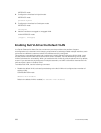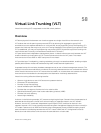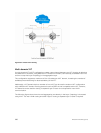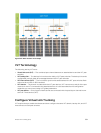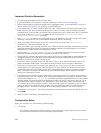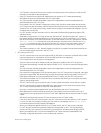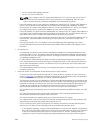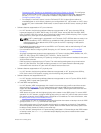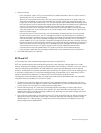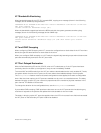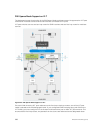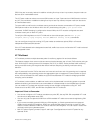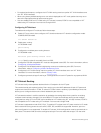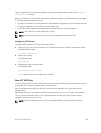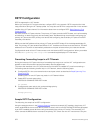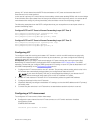• Failure scenarios
– On a link failover, when a VLT port channel fails, the traffic destined for that VLT port channel is
redirected to the VLTi to avoid flooding.
– When a VLT switch determines that a VLT port channel has failed (and that no other local port
channels are available), the peer with the failed port channel notifies the remote peer that it no
longer has an active port channel for a link. The remote peer then enables data forwarding across
the interconnect trunk for packets that would otherwise have been forwarded over the failed port
channel. This mechanism ensures reachability and provides loop management. If the VLT
interconnect fails, the VLT software on the primary switch checks the status of the remote peer
using the backup link. If the remote peer is up, the secondary switch disables all VLT ports on its
device to prevent loops.
– If all ports in the VLT interconnect fail, or if the messaging infrastructure fails to communicate
across the interconnect trunk, the VLT management system uses the backup link interface to
determine whether the failure is a link-level failure or whether the remote peer has failed entirely.
If the remote peer is still alive (heartbeat messages are still being received), the VLT secondary
switch disables its VLT port channels. If keepalive messages from the peer are not being received,
the peer continues to forward traffic, assuming that it is the last device available in the network. In
either case, after recovery of the peer link or reestablishment of message forwarding across the
interconnect trunk, the two VLT peers resynchronize any MAC addresses learned while
communication was interrupted and the VLT system continues normal data forwarding.
– If the primary chassis fails, the secondary chassis takes on the operational role of the primary.
• The SNMP MIB reports VLT statistics.
RSTP and VLT
VLT provides loop-free redundant topologies and does not require RSTP.
RSTP can cause temporary port state blocking and may cause topology changes after link or node
failures. Spanning tree topology changes are distributed to the entire layer 2 network, which can cause a
network-wide flush of learned MAC and ARP addresses, requiring these addresses to be re-learned.
However, enabling RSTP can detect potential loops caused by non-system issues such as cabling errors
or incorrect configurations. To minimize possible topology changes after link or node failure, RSTP is
useful for potential loop detection. Configure RSTP using the following specifications.
The following recommendations help you avoid these issues and the associated traffic loss caused by
using RSTP when you enable VLT on both VLT peers:
• Configure any ports at the edge of the spanning tree’s operating domain as edge ports, which are
directly connected to end stations or server racks. Disable RSTP on ports connected directly to Layer
3-only routers not running STP or configure them as edge ports.
• Ensure that the primary VLT node is the root bridge and the secondary VLT peer node has the
second-best bridge ID in the network. If the primary VLT peer node fails, the secondary VLT peer
node becomes the root bridge, avoiding problems with spanning tree port state changes that occur
when a VLT node fails or recovers.
• Even with this configuration, if the node has non-VLT ports using RSTP that you did not configure as
edge ports and are connected to other Layer 2 switches, spanning tree topology changes are still
detected after VLT node recovery. To avoid this scenario, ensure that you configure any non-VLT
ports as edge ports or disable RSTP.
966
Virtual Link Trunking (VLT)



